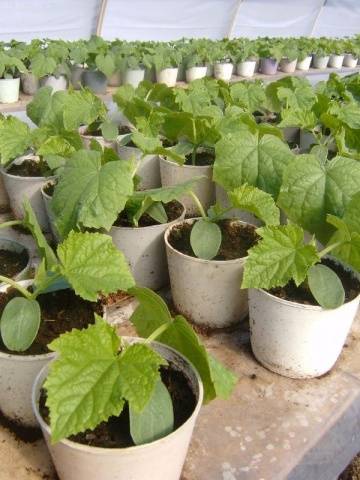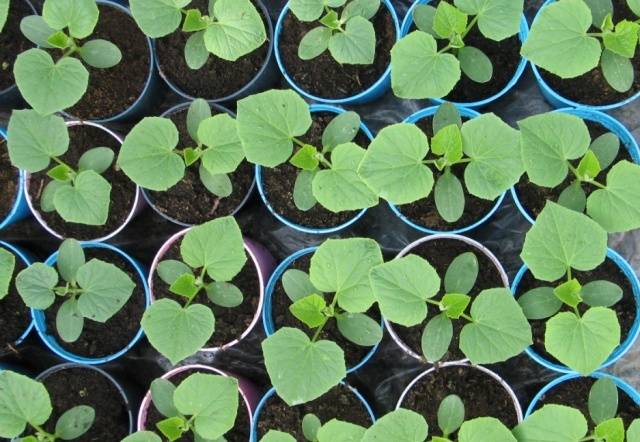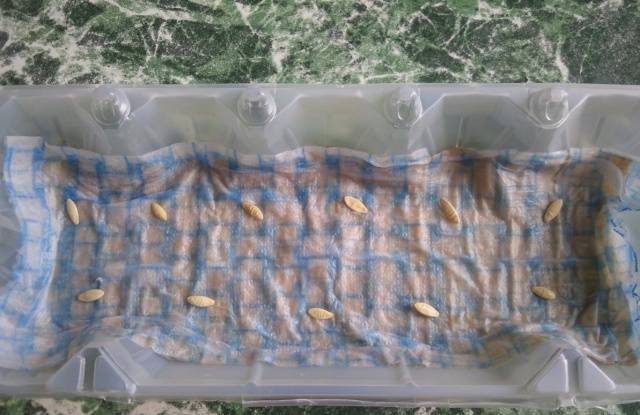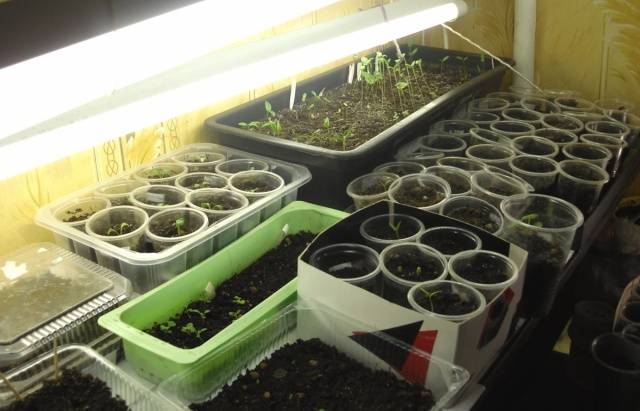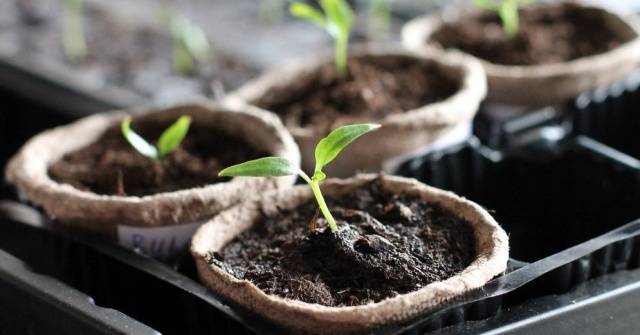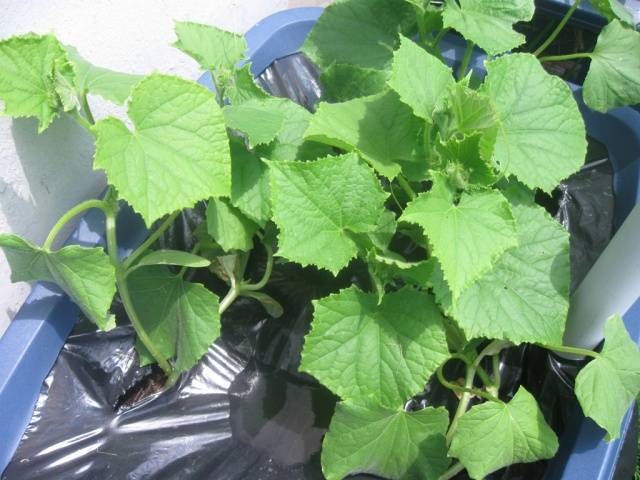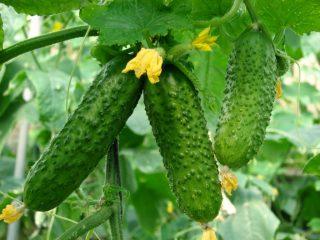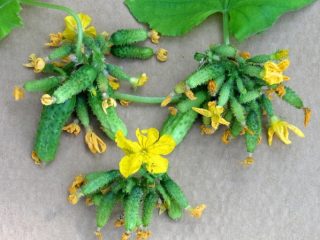Content
A gardener who decides to sow seedlings will receive the first cucumbers earlier and reap more crops. But in order for plants to develop correctly, to be strong and healthy, they need suitable conditions. It is important to choose time for sowing seeds, and then for planting plants in open ground.
When to sow the seeds
Seedlings need to be sown at the optimal time. Plants must be sufficiently developed, but they must not be allowed to permeate at home. It takes about three weeks for the seedlings to grow.
Therefore, the time for sowing must be allocated 20-25 days before the planned planting in the soil.
It is recommended to plant cucumbers on a bed under a film in May 10-15, and in open ground - from June 2 to 10. Based on this, it is possible to sow seeds for seedlings in the second half of April for beds under a film and in May for planting in open ground.
What seeds are best for seedlings
Before how to grow seedlings, you need not only to determine the timing of sowing, but also to choose the right cucumber seeds. They remain viable for up to 5 years. To get a bountiful harvest, it is preferable to take seeds of three years. Their development will take a little longer, but such sprouts better resist cucumber diseases. Their flowering is predominantly female.
To save seed germination it is important to observe the storage conditions. The air temperature should be 15 degrees, the air humidity should be in the range of 50-60 percent.
Do I need to soak seeds before planting
It depends on whether the seeds were soaked before planting when they will germinate. Seeds that hatch grow faster.
A moist environment is required for germination. Cucumber seeds are placed on wet gauze or cloth and moistened on both sides. They should always be wet, but not soaked in water.
The second condition for seed germination is warmth. The cup in which they are soaked should be placed next to the battery or lamp. If the temperature reaches 30 degrees, germination can be expected in a day. However, if it drops to 15 degrees, the seeds may not germinate at all or it will take a long time before the root appears.
In theory, seeds can be sown directly into the soil. In this case, you cannot test them for germination.
How to speed up seed germination
In addition to soaking (which is performed immediately before planting), there are several other procedures to accelerate seed germination. Some of them are listed below.
- Calibration... Essentially, it is a selection of seeds. First, their external parameters are assessed. To test germination, seeds are placed in a container of salt water and mixed. Those suitable for sowing will sink to the bottom, floating ones should not be used. Good seeds are picked and dried.
- Hardening... This procedure is needed in order to increase the resistance of plants to temperature fluctuations. To harden the seeds, they are kept in a humid environment until they swell. This takes about six hours. Then they are kept in the refrigerator for 12 hours. Then leave for 12 hours at room temperature. You need to change the temperature regime in this way within five days. During this time, the seeds should be moist.
- Disinfection... Possibly in two ways.During hydrothermal disinfection, the seeds are alternately placed in hot (approximately 50 degrees) and cold water. The duration of the procedure is 10 minutes. The second way is chemical disinfection. The seeds are kept for 10 minutes in a 10% hydrogen peroxide solution heated to 35 degrees.
- Warming up... This procedure is carried out before sowing to increase seed germination. They are hung in a cloth bag next to a radiator or other heat source and kept for 3-4 hours.
It is not difficult to carry out these procedures for seed treatment. But they allow you to increase resistance to adverse weather conditions and pests.
How to choose and prepare a container for seedlings
When choosing a container for future seedlings, it is worth considering that a cucumber is a rather capricious culture. Plants do not tolerate root damage. Therefore, they are planted in separate pots.
There are peat tablets, peat and coconut pots on the modern market. A good option for short-term seed germination is an egg shell. A simple and affordable method is growing seedlings in plastic jars of yogurt or mayonnaise.
If the plants are grown in a common pot, a length of 8 × 8 or 10 × 10 cm should be provided for each sprout. However, a separate container is preferable.
It is recommended to fill the pot as follows:
- cover the bottom with a two-centimeter layer of sawdust;
- cover the nutrient soil with a layer of 5-7 cm, but in such a way that a couple of centimeters remain to the edge of the container.
For nutrient soil, you can take peat and humus in equal proportions. For enrichment, you can use superphosphate (a quarter cup for a bucket of soil) and wood ash (2 glasses for a bucket of soil).
Recommendations for keeping seedlings
The optimal volume of the container for seedlings is from 300 to 500 g. For convenience, all jars can be placed on a pallet or in a box. Here are some helpful tips.
- Several holes must be made in the bottom of the containers so that oxygen can flow to the roots.
- When filling the jars with soil, you need to leave a couple of centimeters to the edge. When the seedlings are watered, the water will not overflow over the top.
- Each pot should have one plant, then it will have enough water and light. Sometimes two seeds are planted, and then a more developed sprout is left, the second is cut off.
- Until the sprouts have sprouted, containers with seedlings are left in a warm place, watered twice a week.
- When shoots have appeared, the seedlings are put on a light windowsill. If there is not enough light, the lamp should be taken care of.
- In the future, watering should be carried out, focusing on the dryness of the soil. Over-watering can lead to root rot or black leg disease.
- Seedlings must be protected from drafts and cold air. If there is frost outside, it is better not to leave containers with sprouts on the windowsill.
One of the key conditions for growing seedlings is adequate lighting. If the sprouts do not receive enough light, they begin to stretch and weaken. In this case, you need to make the lighting more intense. With a lack of sunlight, you can use lamps.
If the seedlings are warm, the first true leaf can be expected on the third day. Depending on the temperature regime, these periods may be longer - up to a week. After the appearance of the first leaf, growth is accelerated. At this stage, it is time to plant seedlings.
What conditions are needed for the growth of cucumbers
When calculating the timing of sowing seeds and planting seedlings, it is important to take into account the climate of your region. Cucumbers are thermophilic plants. They are also very demanding on moisture. In general, this culture needs the following conditions for abundant fruiting:
- suitable humidity level;
- good illumination;
- heat;
- nutritious soil.
For optimal growth of cucumbers, an air temperature of about 25-30 degrees is needed, and a soil temperature of 20-25 degrees.With a cold snap, the growth of the bush slows down. When the temperature drops to 10 degrees, it stops.
For soil, loam is preferred, pH neutral. For good growth, you need soil with humus.
You need to plant seedlings in a well-heated garden bed in the evening. Before planting, be sure to water the ground. Ideally, a cucumber garden needs a well-lit place where there is no wind. You can also install arcs and cover the newly planted plants with foil.
In order to get a fresh harvest of cucumbers as soon as possible, you should first sow seeds for seedlings. It is necessary to comply with the conditions and terms of sowing. Seeds are planted three weeks before the planned transplant in open ground. During this time, the plants will have time to take shape. But you should not allow the transplanting of seedlings at home. You can plant it after the first full-fledged leaf appears.
